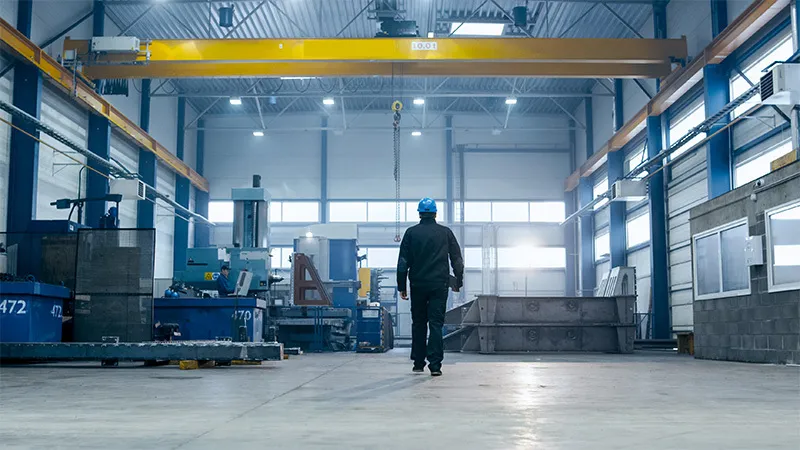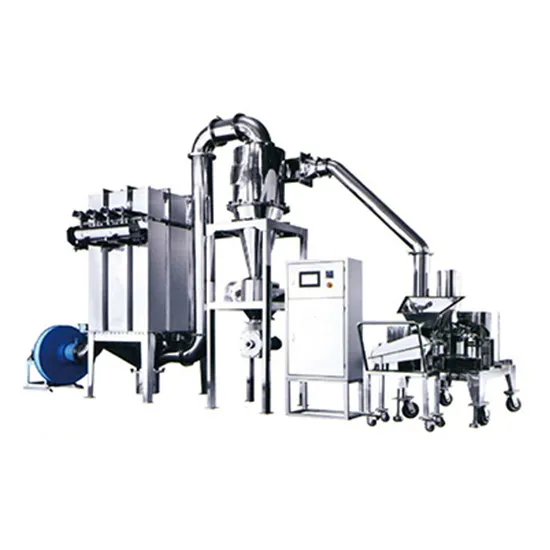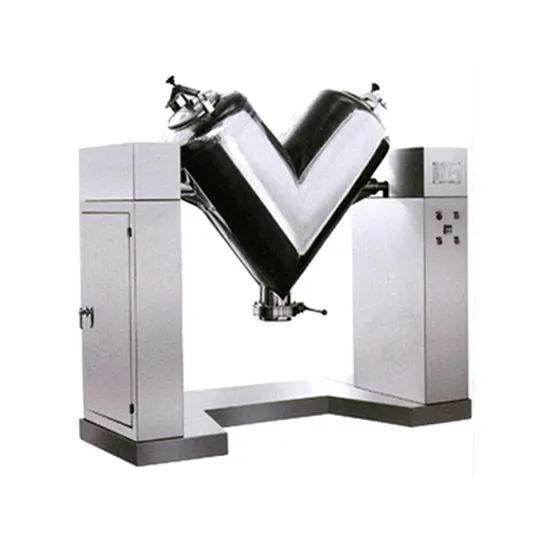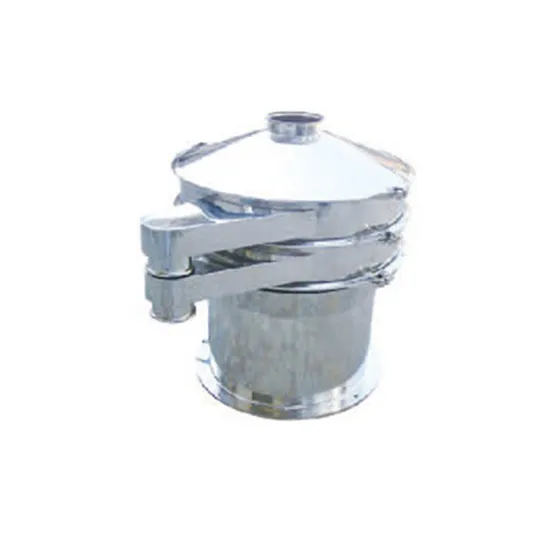NEWS
How to Choose the Right Size and Capacity for Your Plastic Granulator Machine
Oct 25,2023
Table of Contents:
1. Understanding Plastic Granulator Machines
2. Factors to Consider When Choosing Size and Capacity
2.1 Material Type and Volume
2.2 Desired Output Rate
2.3 Available Space
2.4 Budget Constraints
2.5 Future Expansion
3. Assessing Material Type and Volume
4. Determining Desired Output Rate
5. Evaluating Available Space
6. Setting Budget Constraints
7. Planning for Future Expansion
8. Frequently Asked Questions (FAQs)
8.1 What is the ideal size for a plastic granulator machine?
8.2 How do I calculate the capacity I need for my plastic granulator machine?
8.3 Can I upgrade the size and capacity of my granulator machine in the future?
8.4 What are the common mistakes to avoid when choosing the size and capacity?
8.5 Are there any safety considerations when operating a plastic granulator machine?
9. Conclusion
1. Understanding Plastic Granulator Machines
Plastic granulator machines are essential equipment in the plastic recycling industry. They are designed to reduce plastic waste into small, uniform pieces called granules, which can then be used to produce new plastic products. These machines come in various sizes and capacities to accommodate different recycling needs.
2. Factors to Consider When Choosing Size and Capacity
When selecting the right size and capacity for your plastic granulator machine, several factors should be taken into account:
2.1 Material Type and Volume
The type of plastic material you will be recycling and the volume of waste generated play a crucial role in determining the appropriate size and capacity of your granulator machine. Different materials have varying densities, hardness, and melting points, which can affect the processing requirements.
2.2 Desired Output Rate
Consider the desired output rate or the amount of granulated plastic you aim to produce per hour. This will help you determine the necessary size and capacity to meet your production goals efficiently.
2.3 Available Space
Assess the available space in your facility or workshop where the granulator machine will be placed. Ensure that you have enough room to accommodate the machine, including sufficient clearance for operation, maintenance, and safety compliance.
2.4 Budget Constraints
Consider your budget limitations when choosing the size and capacity of your plastic granulator machine. Remember that larger machines with higher capacities often come with a higher price tag. Strike a balance between your production needs and the investment you are willing to make.
2.5 Future Expansion
Anticipate future growth and expansion of your plastic recycling operations. If you foresee an increase in waste generation or plan to expand your production capacity, it is wise to choose a granulator machine that allows for future upgrades or modular additions.
3. Assessing Material Type and Volume
To determine the appropriate size and capacity for your plastic granulator machine, thoroughly assess the type and volume of plastic waste you will be processing. Consider factors such as the material's bulk density, moisture content, and the presence of contaminants.
4. Determining Desired Output Rate
Calculate the desired output rate by estimating the amount of granulated plastic you need to produce per hour. This can be based on your current or projected production requirements. Consider factors like production cycle time, operational hours, and customer demands.
5. Evaluating Available Space
Measure the available space in your facility to ensure that the chosen granulator machine can be accommodated. Consider the machine's dimensions, accessibility for maintenance, and safety regulations. Allow ample space for material handling and any additional equipment, such as conveyors or storage bins.
6. Setting Budget Constraints
Determine your budget for a plastic granulator machine, taking into account both the purchase cost and potential operational expenses, such as maintenance and energy consumption. Consider the return on investment and choose a machine that offers the best value for your money.
7. Planning for Future Expansion
Plan for future expansion by considering your long-term goals and potential growth in plastic waste generation. It is advisable to invest in a granulator machine that can be easily upgraded or expanded to accommodate increased capacity, rather than having to replace it entirely.
8. Frequently Asked Questions (FAQs)
8.1 What is the ideal size for a plastic granulator machine?
The ideal size for a plastic granulator machine depends on your specific recycling needs, material type, and desired output rate. It is best to consult with industry experts or manufacturers to determine the most suitable size for your application.
8.2 How do I calculate the capacity I need for my plastic granulator machine?
To calculate the required capacity, consider factors such as the material volume, desired output rate, and processing time per cycle. Multiply the material volume by the desired output rate to get an estimate of the capacity needed.
8.3 Can I upgrade the size and capacity of my granulator machine in the future?
Some granulator machines offer modular designs or options for future upgrades. It is important to choose a machine that allows for flexibility and expansion if you anticipate a need for increased capacity in the future.
8.4 What are the common mistakes to avoid when choosing the size and capacity?
Common mistakes to avoid include underestimating the volume of plastic waste, neglecting future expansion plans, overlooking safety requirements, and overlooking the need for maintenance and operational space.
8.5 Are there any safety considerations when operating a plastic granulator machine?
Yes, operating a granulator machine requires adherence to safety protocols. Operators should be trained on proper usage, maintenance, and emergency procedures. Safety features such as machine guards, emergency stop buttons, and lockout/tagout systems should be in place to prevent accidents.
9. Conclusion
Choosing the right size and capacity for your plastic granulator machine is crucial to ensure optimal performance and productivity in your recycling operations. Consider factors such as material type and volume, desired output rate, available space, budget constraints, and future expansion plans. By making an informed decision, you can maximize the efficiency and profitability of your plastic recycling process.
1. Understanding Plastic Granulator Machines
2. Factors to Consider When Choosing Size and Capacity
2.1 Material Type and Volume
2.2 Desired Output Rate
2.3 Available Space
2.4 Budget Constraints
2.5 Future Expansion
3. Assessing Material Type and Volume
4. Determining Desired Output Rate
5. Evaluating Available Space
6. Setting Budget Constraints
7. Planning for Future Expansion
8. Frequently Asked Questions (FAQs)
8.1 What is the ideal size for a plastic granulator machine?
8.2 How do I calculate the capacity I need for my plastic granulator machine?
8.3 Can I upgrade the size and capacity of my granulator machine in the future?
8.4 What are the common mistakes to avoid when choosing the size and capacity?
8.5 Are there any safety considerations when operating a plastic granulator machine?
9. Conclusion
1. Understanding Plastic Granulator Machines
Plastic granulator machines are essential equipment in the plastic recycling industry. They are designed to reduce plastic waste into small, uniform pieces called granules, which can then be used to produce new plastic products. These machines come in various sizes and capacities to accommodate different recycling needs.
2. Factors to Consider When Choosing Size and Capacity
When selecting the right size and capacity for your plastic granulator machine, several factors should be taken into account:
2.1 Material Type and Volume
The type of plastic material you will be recycling and the volume of waste generated play a crucial role in determining the appropriate size and capacity of your granulator machine. Different materials have varying densities, hardness, and melting points, which can affect the processing requirements.
2.2 Desired Output Rate
Consider the desired output rate or the amount of granulated plastic you aim to produce per hour. This will help you determine the necessary size and capacity to meet your production goals efficiently.
2.3 Available Space
Assess the available space in your facility or workshop where the granulator machine will be placed. Ensure that you have enough room to accommodate the machine, including sufficient clearance for operation, maintenance, and safety compliance.
2.4 Budget Constraints
Consider your budget limitations when choosing the size and capacity of your plastic granulator machine. Remember that larger machines with higher capacities often come with a higher price tag. Strike a balance between your production needs and the investment you are willing to make.
2.5 Future Expansion
Anticipate future growth and expansion of your plastic recycling operations. If you foresee an increase in waste generation or plan to expand your production capacity, it is wise to choose a granulator machine that allows for future upgrades or modular additions.
3. Assessing Material Type and Volume
To determine the appropriate size and capacity for your plastic granulator machine, thoroughly assess the type and volume of plastic waste you will be processing. Consider factors such as the material's bulk density, moisture content, and the presence of contaminants.
4. Determining Desired Output Rate
Calculate the desired output rate by estimating the amount of granulated plastic you need to produce per hour. This can be based on your current or projected production requirements. Consider factors like production cycle time, operational hours, and customer demands.
5. Evaluating Available Space
Measure the available space in your facility to ensure that the chosen granulator machine can be accommodated. Consider the machine's dimensions, accessibility for maintenance, and safety regulations. Allow ample space for material handling and any additional equipment, such as conveyors or storage bins.
6. Setting Budget Constraints
Determine your budget for a plastic granulator machine, taking into account both the purchase cost and potential operational expenses, such as maintenance and energy consumption. Consider the return on investment and choose a machine that offers the best value for your money.
7. Planning for Future Expansion
Plan for future expansion by considering your long-term goals and potential growth in plastic waste generation. It is advisable to invest in a granulator machine that can be easily upgraded or expanded to accommodate increased capacity, rather than having to replace it entirely.
8. Frequently Asked Questions (FAQs)
8.1 What is the ideal size for a plastic granulator machine?
The ideal size for a plastic granulator machine depends on your specific recycling needs, material type, and desired output rate. It is best to consult with industry experts or manufacturers to determine the most suitable size for your application.
8.2 How do I calculate the capacity I need for my plastic granulator machine?
To calculate the required capacity, consider factors such as the material volume, desired output rate, and processing time per cycle. Multiply the material volume by the desired output rate to get an estimate of the capacity needed.
8.3 Can I upgrade the size and capacity of my granulator machine in the future?
Some granulator machines offer modular designs or options for future upgrades. It is important to choose a machine that allows for flexibility and expansion if you anticipate a need for increased capacity in the future.
8.4 What are the common mistakes to avoid when choosing the size and capacity?
Common mistakes to avoid include underestimating the volume of plastic waste, neglecting future expansion plans, overlooking safety requirements, and overlooking the need for maintenance and operational space.
8.5 Are there any safety considerations when operating a plastic granulator machine?
Yes, operating a granulator machine requires adherence to safety protocols. Operators should be trained on proper usage, maintenance, and emergency procedures. Safety features such as machine guards, emergency stop buttons, and lockout/tagout systems should be in place to prevent accidents.
9. Conclusion
Choosing the right size and capacity for your plastic granulator machine is crucial to ensure optimal performance and productivity in your recycling operations. Consider factors such as material type and volume, desired output rate, available space, budget constraints, and future expansion plans. By making an informed decision, you can maximize the efficiency and profitability of your plastic recycling process.
More News










